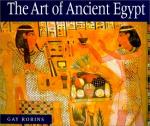|
This section contains 630 words (approx. 3 pages at 300 words per page) |

|
Life and Death.
The iba -dance and the heby -dance are two different names for the same dance. Old and Middle Kingdom artists used the word iba in captions to scenes depicting it, while New Kingdom scribes used heby in the same context. Artists portrayed the iba -dance and the heby -dance in tombs, suggesting they had some meaning for the deceased in the next life. Yet they portrayed the dancers performing while people ate meals, a quintessential part of daily life on earth. During the Old Kingdom, the tomb scenes show the deceased eating, often with a spouse. New Kingdom scenes portray a banquet with many guests in addition to the deceased and close family members both eating and watching the dance. Thus it seems likely that the Egyptians watched iba- and heby-dances while eating on earth and also expected to...
|
This section contains 630 words (approx. 3 pages at 300 words per page) |

|




